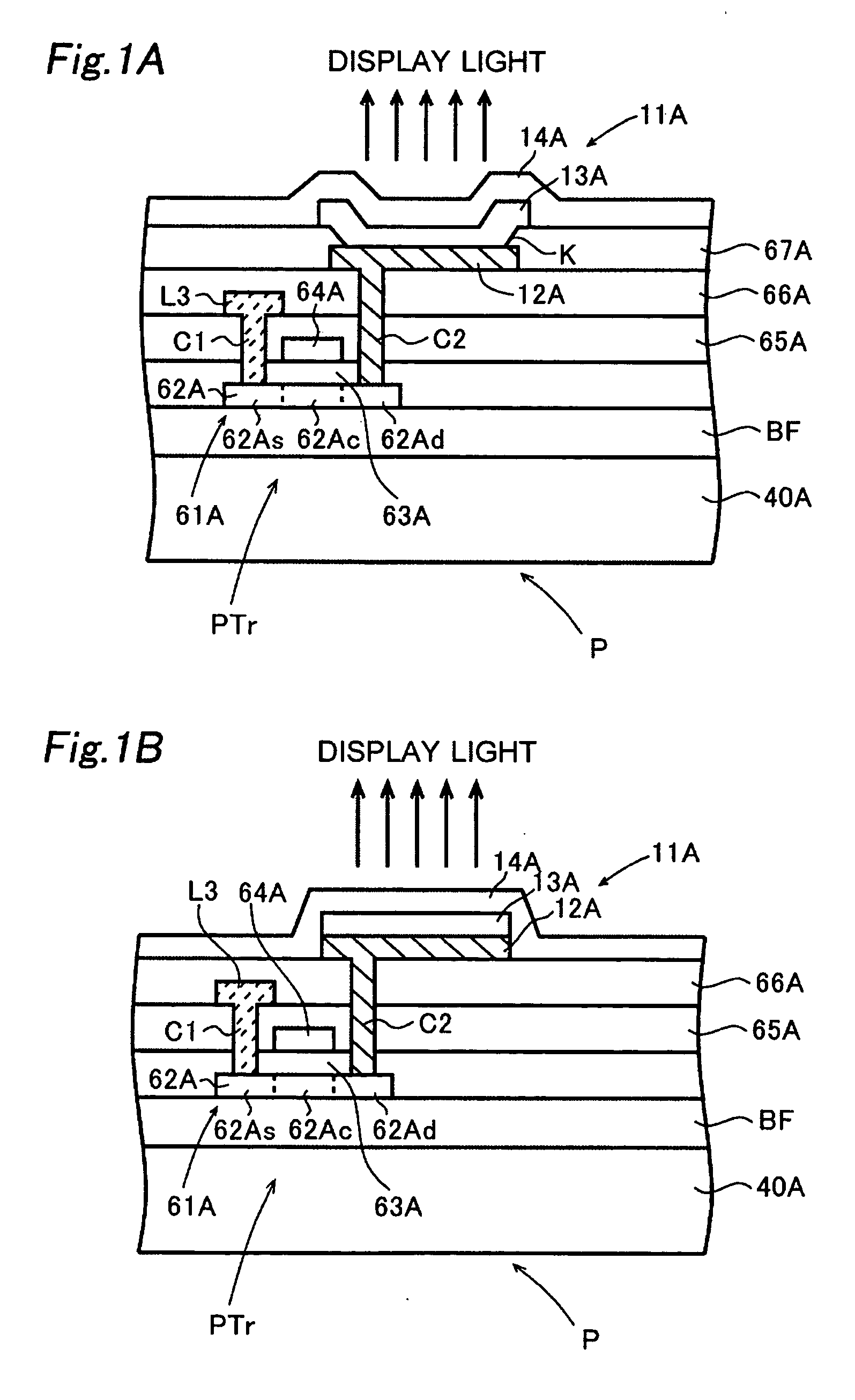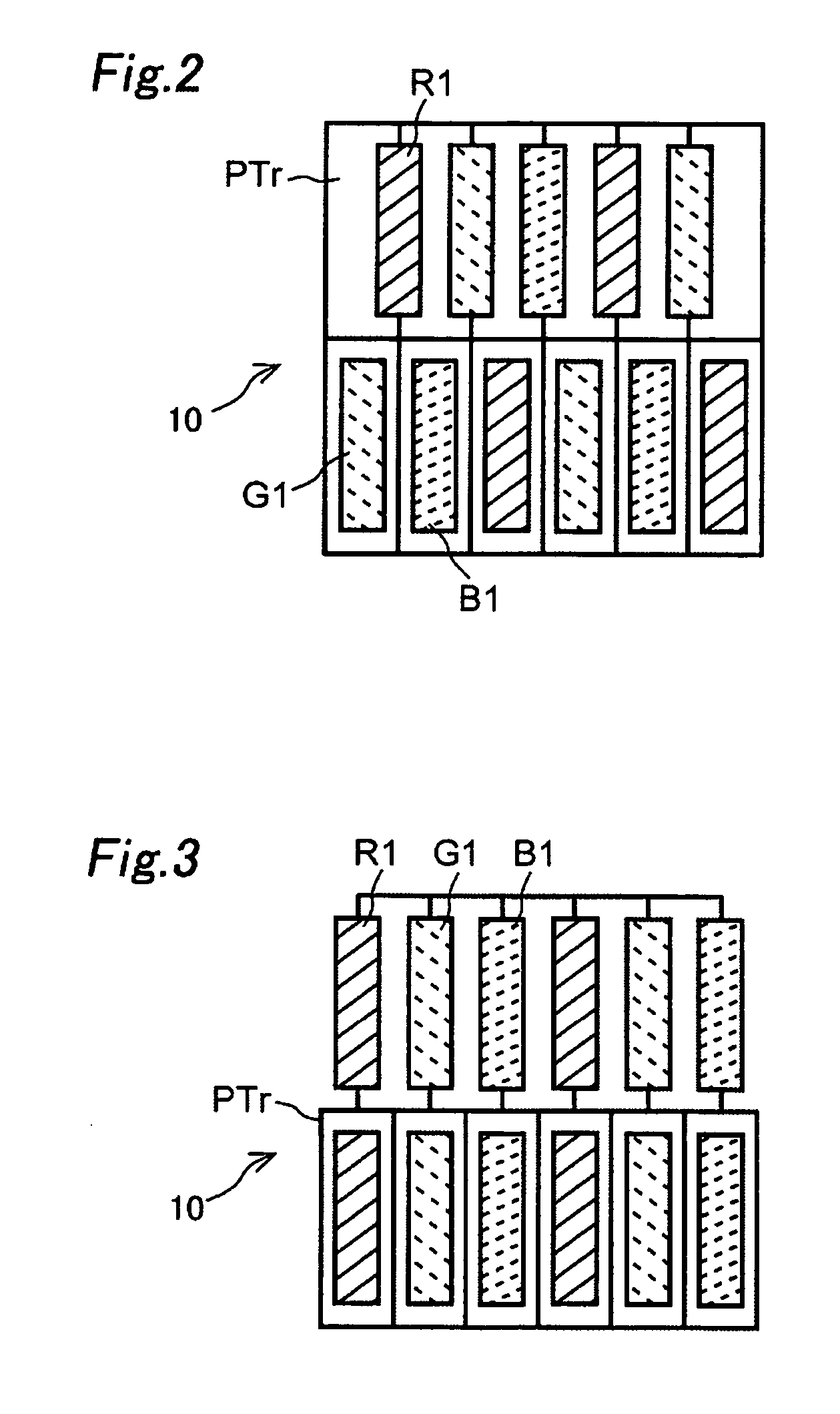Organic electroluminescent display device of top emission type
a display device and electroluminescent technology, applied in the direction of static indicating devices, identification means, instruments, etc., can solve the problem of limiting the array pattern of emissive regions, and achieve the effect of influencing (variance in luminance or life cycle)
- Summary
- Abstract
- Description
- Claims
- Application Information
AI Technical Summary
Benefits of technology
Problems solved by technology
Method used
Image
Examples
first embodiment
[0063]FIG. 2 is a plan view showing a display portion 10 of the organic EL display device of top emission type of the invention. A plurality of TFT formation regions PTr of the pixels P, that is, a plurality of regions where the driving TFT 61A, the pixel selecting TFT 71A, and the storage capacitor Cs are formed, is formed in a rectangular shape and disposed in a stripe array on the display portion 10. Emissive regions R1, G1 and B1 of the organic EL element 11A respectively forming each of the pixels P are formed in a rectangular shape with same size, and placed in a delta array over the adjacent TFT formation regions PTr.
second embodiment
[0064]FIG. 3 is a plan view showing a display portion 10 of an organic EL display device of top emission type of a A plurality of TFT formation regions PTr is formed in a rectangular shape and disposed in a delta array on the display portion 10. Emissive regions R1, G1, and B1 are respectively formed in a rectangular shape with the same size and disposed in a stripe array, lying over the adjacent TFT formation regions PTr in the alternate rows where the TFT formation regions PTr are shifted.
third embodiment
[0065]FIG. 4 is a plan view showing a display portion 10 of an organic EL display device of top emission type of a A plurality of TFT formation regions PTr is formed in a rectangular shape and disposed in a stripe array on the display portion 10. Emissive regions R1, G1 and B1 respectively form a rectangular shape having size different from each other, and are placed in a stripe array over the adjacent TFT formation regions PTr (for example, extending in a first (row) direction over the pixels P arrayed in a matrix).
PUM
 Login to View More
Login to View More Abstract
Description
Claims
Application Information
 Login to View More
Login to View More - R&D
- Intellectual Property
- Life Sciences
- Materials
- Tech Scout
- Unparalleled Data Quality
- Higher Quality Content
- 60% Fewer Hallucinations
Browse by: Latest US Patents, China's latest patents, Technical Efficacy Thesaurus, Application Domain, Technology Topic, Popular Technical Reports.
© 2025 PatSnap. All rights reserved.Legal|Privacy policy|Modern Slavery Act Transparency Statement|Sitemap|About US| Contact US: help@patsnap.com



